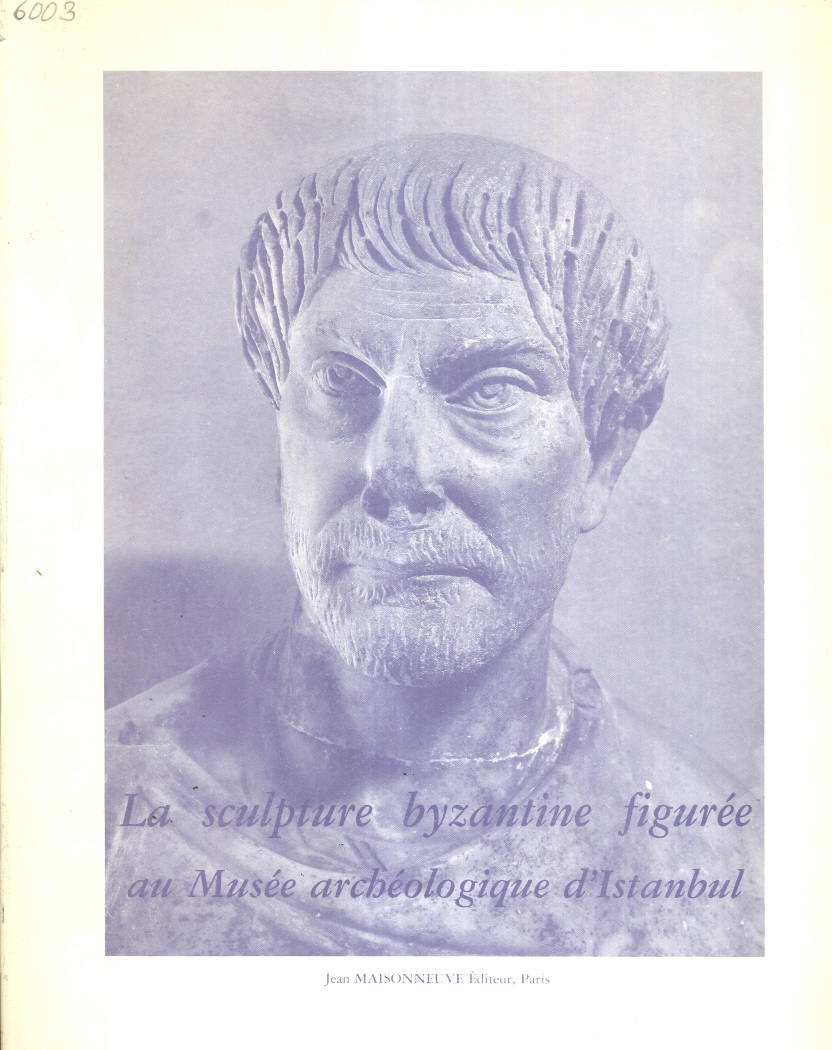Byzantine Sculpture
(λιθοξοϊκή, γλυπτική). Sculpture in the round was largely reduced to relief in Byz., with the exception of imperial statuary and that of dignitaries; the last honorific statue to be erected in Constantinople was that of a cousin of Emp. Herakleios ca.614 (Mango in Aphieroma Svoronos 1:30f). The disappearance of statuary may be connected with a gradual process of dematerialization, also evident in sculpture intended for gardens or tombs. Relief portraits appear already on early imperial monuments: the Arch of Constantine, the columns of Theodosios I and Arkadios, and the Obelisk of Theodosios I, offer examples of high-quality relief.
Tombs containing sarcophagi or sarcophagus slabs provide the best recorded group of 4th- and 5th-C. sculpture, with Rome and Ravenna as the main centers of production; Alexandrian workshops furnished the imperial porphyrysarcophagi. Church furniture, including ambos, ciboria, and episcopal thrones, is closely related to architectural sculpture and was often exported from the same Constantinopolitan workshops all around the Mediterranean. Peripheral workshops included Thessalonike, an ambo from there (J.-P. Sodini, BCH 100 [1976] 493–510) being an outstanding example with figural decoration. A gradual shift from the Graeco-Roman heritage toward truly Byz. forms, with a new ornamental vocabulary partially indebted to Sasanian influence, appears in architectural sculpture (Church of St. Polyeuktos) in the time of Justinian I.
From the 8th C. onward, sculpture in the round was no longer being created, although Byz. writers (the anonymous author of Parastaseis syntomoi chronikai, Niketas Choniates) continued to notice Constantinople's heritage of bronze statues. A new type of monumental sculpture appeared in 10th-C. Constantinople—the relief icon, many extant examples of which were transported to S. Marco, Venice. The development of architectural sculpture can be found in numerous monuments in Constantinople, along the coast of Asia Minor, and in Greece. Late 9th–11th-C. templa, capitals, cornices, slabs, icon frames, and doorframes display a limited vocabulary of crosses, geometric patterns, stylized floral ornament, a few animals or birds, and bosses. From the 12th C., however, a resurgent interest in sculpture is accompanied by increased plasticity and a repertory that now included mythological subjects, heraldic compositions, and animal combat, the human form being only rarely employed, mainly in Palaiologan Constantinople (H. Belting, MünchJb3 23 [1972] 63–100). The same ornamental repertory is adopted in the rare preserved examples of church furniture and the numerous funerary monuments of the period, mainly built sarcophagi faced with marble slabs. A more ambitious type of funerary monument, dressed in marble, appears in 14th-C. Constantinople, with rich sculptural decoration around the arch of the niche (Ø. Hjort, DOP 33 [1979] 248–63). (See also Oxyrhynchus Sculpture.)
Bouras, Laskarina. "Sculpture." In The Oxford Dictionary of Byzantium. : Oxford University Press, 1991.
Books on Byzantine Sculpture
-
Late Byzantine Sculpture by
Call Number: NB172 .M45 2013ISBN: 9782503530642Publication Date: 2013-11-29 -
 La sculpture architecturale byzantine dans le théme de Nikopolis du Xe au dâebut du XIIIe siécle : épire, étolie-Acaranie et Sud de l'Albanie
Call Number: NA3551.N55 V36 2005ISBN: 2869581645
La sculpture architecturale byzantine dans le théme de Nikopolis du Xe au dâebut du XIIIe siécle : épire, étolie-Acaranie et Sud de l'Albanie
Call Number: NA3551.N55 V36 2005ISBN: 2869581645 -
 Roman and early Byzantine portrait sculpture in Asia Minor
by
Call Number: NB118.T9 I53 1966
Roman and early Byzantine portrait sculpture in Asia Minor
by
Call Number: NB118.T9 I53 1966 -
 La sculpture Byzantine figurée au Musée Archéologique d'Istanbul
by
Call Number: N3690.T8 I77 1990ISBN: 2906053082
La sculpture Byzantine figurée au Musée Archéologique d'Istanbul
by
Call Number: N3690.T8 I77 1990ISBN: 2906053082 -
 Sculptures byzantines de Constantinople
Call Number: NB870 .G7 1963
Sculptures byzantines de Constantinople
Call Number: NB870 .G7 1963 -
 La Sculpture antique, de Phidias a l'ere byzantine
by
Call Number: NB100 .P53 1923
La Sculpture antique, de Phidias a l'ere byzantine
by
Call Number: NB100 .P53 1923 -
The Afterlife of Greek and Roman Sculpture by
Call Number: NB85 .A39 2016ISBN: 9780472119691Publication Date: 2016-06-27 -
The Sculptures of the Ayasofya Müzesi in Istanbul by
Call Number: NA5870.A9 S38 2010ISBN: 9786055607197Publication Date: 2010-12-31 -
-
Die byzantinische Reliefikone
Call Number: NB172 .L3 1964 -
Catalogue of the Sculpture in the Dumbarton Oaks Collection from the Ptolemaic Period to the Renaissance by
Call Number: NB87.W3 D86 1995ISBN: 0884022129Publication Date: 1995-01-01 -
The Urban Image of Late Antique Constantinople by
Call Number: NB85 .B375 2004ISBN: 052182723XPublication Date: 2004-11-16

